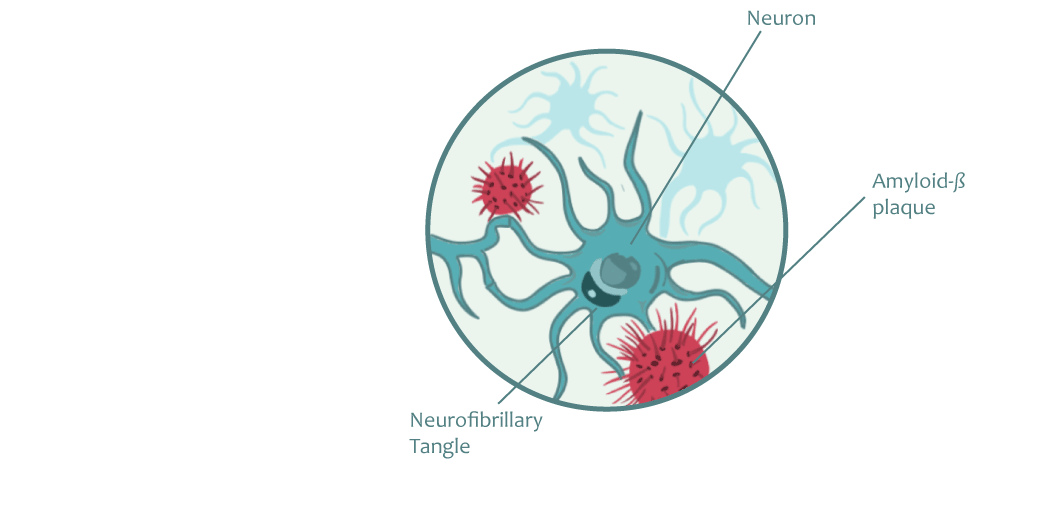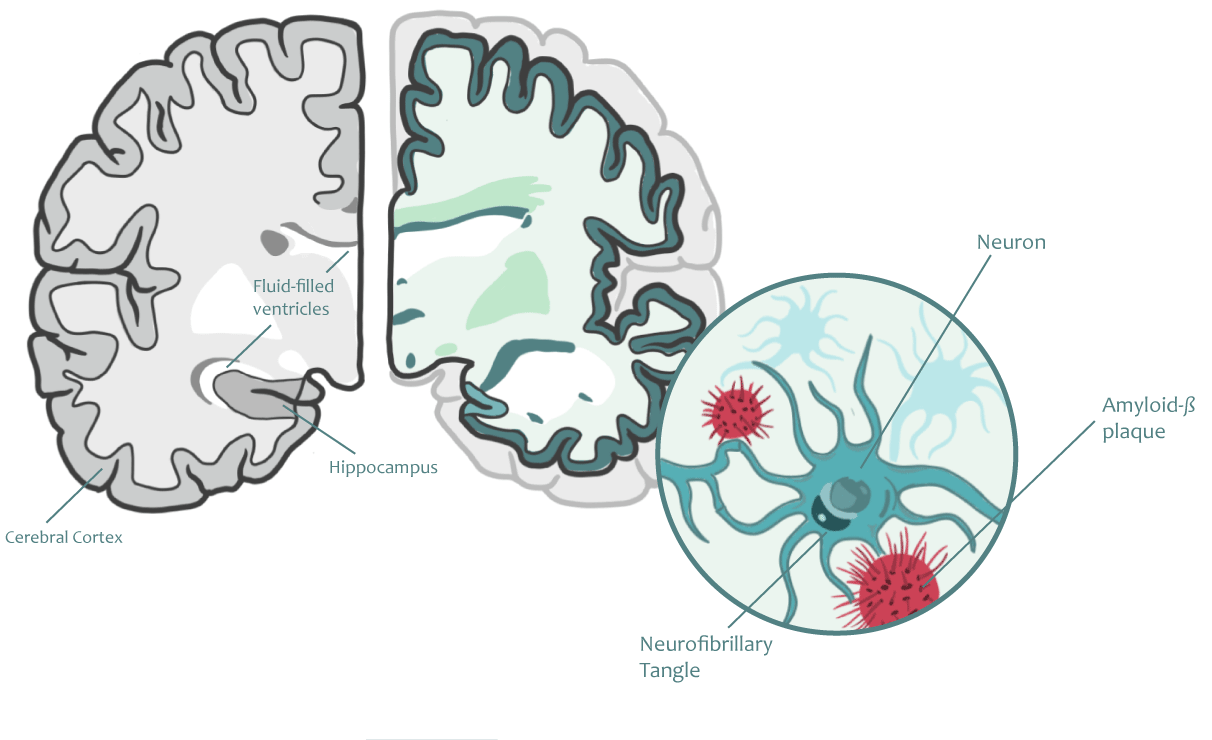Structural Changes
AD shrinks the brain.
As AD spreads through the brain, connections between neurons and later the neurons themselves are lost. In the later stages, the brain noticeably shrinks.
How AD develops
A vicious cycle of plaque deposits, neuronal death and inflammation.
Amyloid plaque deposition is a hallmark of AD and amyloid acts together with Tau leading to neurodegnerative processes. Amyloid itself may not be sufficient to induce neurodegeneration, but rather triggers inflammatory processes that need to be balanced.
Microscopic Changes
In the early stages, only microscopic changes are visible.
Two important factors, amyloid beta peptide deposits and neurofibrillary tangles caused by tau-proteins are only visible under a microscope.


Structural Changes
AD shrinks the brain
As AD spreads through the brain, connections between neurons and later the neurons themselves are lost. In the later stages, the brain noticeably shrinks.
Microscopic Changes
In the early stages, only microscopic changes are visible
Two important factors, amyloid beta peptide deposits and neurofibrillary tangles caused by tau-proteins are only visible under a microscope.
How AD develops
A vicious cycle of plaque deposits, neuronal death and inflammation.
Amyloid plaque deposition is a hallmark of AD and amyloid acts together with Tau leading to neurodegnerative processes. Amyloid itself may not be sufficient to induce neurodegeneration, but rather triggers inflammatory processes that need to be balanced.
